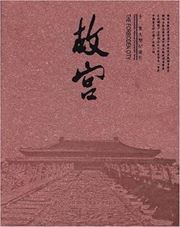Twelve-episode Historical Documentary Series: The Forbidden City
故宫(8DVD-9+1CD)
Publisher:
Popular Science Press
Publication:
1/2009
Languages:
English, Chinese
Binding:
DVD
ISBN/SKU:
9787799820958
Pages:
9
Sizes:
270 x 210mm
Weight:
0.3000
In Stock (Only 1 copy left)
To be dispatched within 1 business day
To be dispatched within 1 business day
£65.94
£54.95
(£65.94 Inc. VAT)
(€61.54)
The Imperial Palace, also known as the Forbidden City, is located in the heart of Beijing. It has served as the residence to 24 emperors throughout the Ming and Qing dynasties between 1368 A.D. and 1911 A.D. but is now used as the Palace Museum.
The Forbidden City has been the center of the highest authority for more than 500 years in China. With garden landscapes and an enormous architectural complex consisting of 9,000 chambers and halls containing furniture and works of art, it has become the historical landmark witnessing invaluable Chinese civilization during the Ming and Qing dynasties.
Part 1: Initiation of the Forbidden City
The Forbidden City had been created history and civilization.It situated on the Imperial City during the Mongol Yuan Dynasty. Upon the establishment of the Ming Dynasty,the place had been reconstructed and in 1406 the Forbidden City had been made.
Part 2: The pinnacle of the flourishing age
In 1644,the Manchus had achieved supremacy in northern China, and a ceremony was held at the Forbidden City to proclaim the young Shunzhi Emperor as ruler of all China under the Qing Dynasty...
Part 3: Governing the country by rites
The east gates are called the 'East flower Gate'. All gates in the Forbidden City are decorated with a nine-by-nine array of golden door nails, except for the East Glorious Gate, which has only eight rows...
Part 4: Administration of state affairs
The Hall of Mental Cultivation is a particularly significant building in the inner courtyard of the Forbidden City. It was here that from the time of Yongzheng Emperor in the 18th century the Qing Emperors lived and ruled the Chinese Empire.
Part 5: Between the state and family
During the invasion of the Eight-Nation Alliance in 1900,Cixi ordered Consort Zhen to be taken out of the prison and finally she ordered Consort Zhen to be thrown into a well behind the Ningxia Palace in the north-eastern part of the Forbidden City.
Part 6: Porcelains in the Forbidden City
The are 340,000 pieces of porcelain in the Forbidden City. These include imperial collections from the Tang Dynasty and the Song Dynasty, as well as pieces commissioned by the Palace, sometimes by the Emperor personally.
Part 7: Paintings an calligraphic works in the Forbidden City
In the room Hall of Three Treasures, an emperor admired paintings and works of calligraphy. 200 years ago, Emperor Qianlong would often sit in the small room of less than 6 squar meters, and quitely appreciated three works of calligraphy...
Part 8: Jade objects in the Forbidden City
Nobody knows how long this jade disk had been there, but opposite the side was located 'Stands the Hall of Mental Cultivation', the place where Qing emperors worked the lived. So when the emperors delt with the state affairs, he could see the jade disk from the throne.
Part 9: Western Fever in the Forbidden City
During the reign of Emperor Qianlong, the thing taht most represented the western advanced techniques and which was therefore the most creative gadget in the Forbidden City was the clock.
Part 10: From palace to museum
On October the 10th, 1995, more than 3,000 distinguished guests and 23,000 ordinary citizens gathered on the square at the Gate of Heavenly Purity in the Forbidden City to witness a special event: The opening ceremony of the Palace Museum.
Part 11: The shifting and loss of national treasures
For most people, November the 1st, 1924 was an ordinary day, but for Pu Yi, the last emperor of Qing Dynansty, it was an unextrordinary one, as he did not expected that it would be his last day in the Fobidden City.
Part 12: The everlasting Forbidden City
Shortly after the founding of new China, a scholar describes his inner feelings: The sky is blue, the water is sweet, and the air is fresh. We can breathe freely now... With the arrival of the new era came also a feeling of joy, and the Imperial Palace turned a new page in the time when there was a new atmosphere.
12集大型纪录片《故宫》将从故宫的建筑艺术、使用功能、馆藏文物和从皇宫到博物院之过程的历史沿革等方面,全面展示故宫辉煌瑰丽、神秘沧桑的宫殿建筑和丰富多彩、充满传奇的珍贵文物,细致讲述了不为人知、真实鲜活的人物命运、历史事件和宫廷生活。触摸历史跳动的强劲脉搏,传承源远流长的中华文明。




